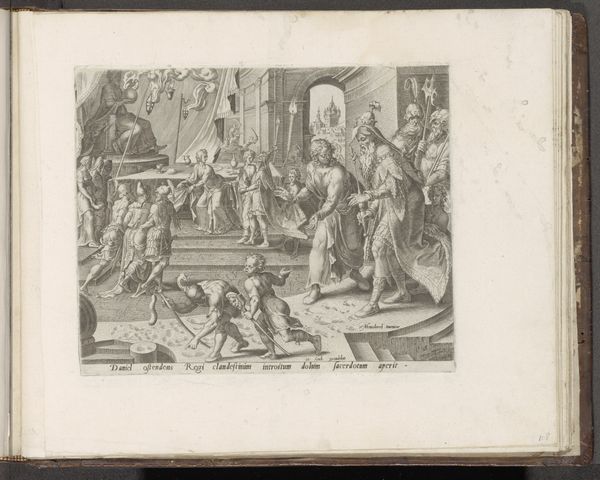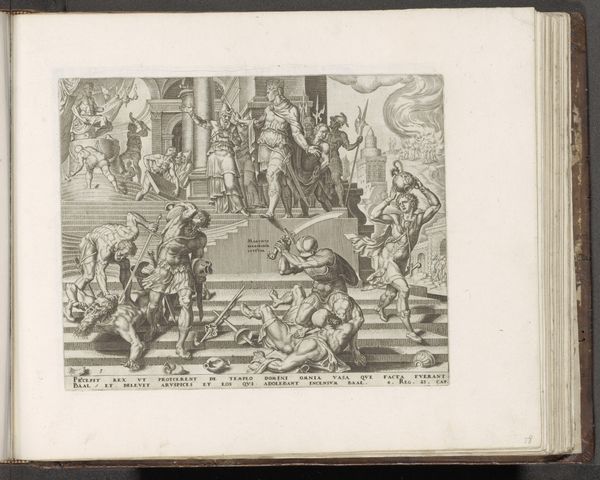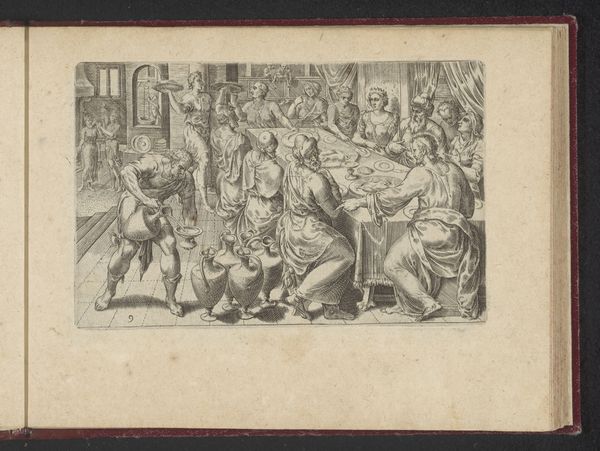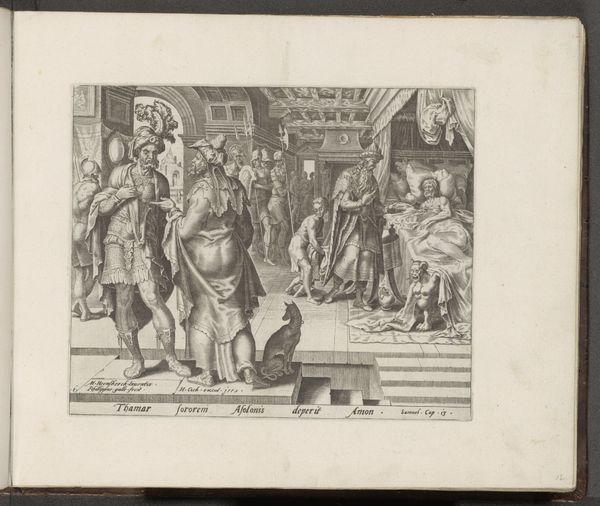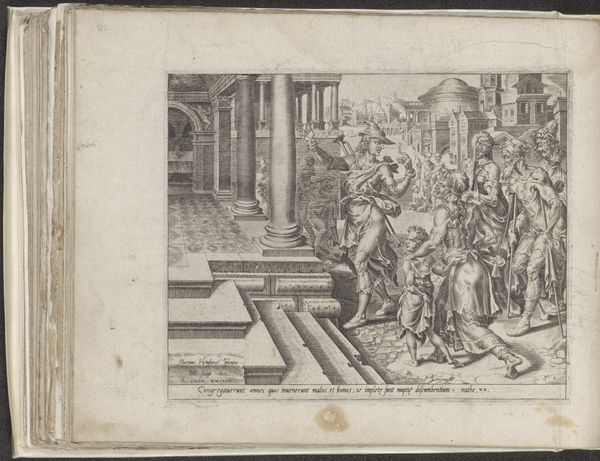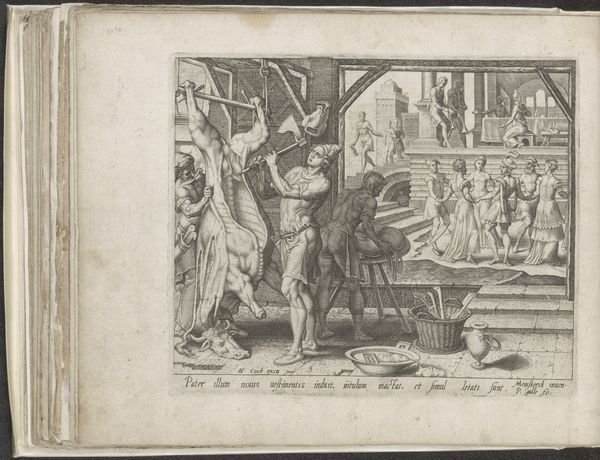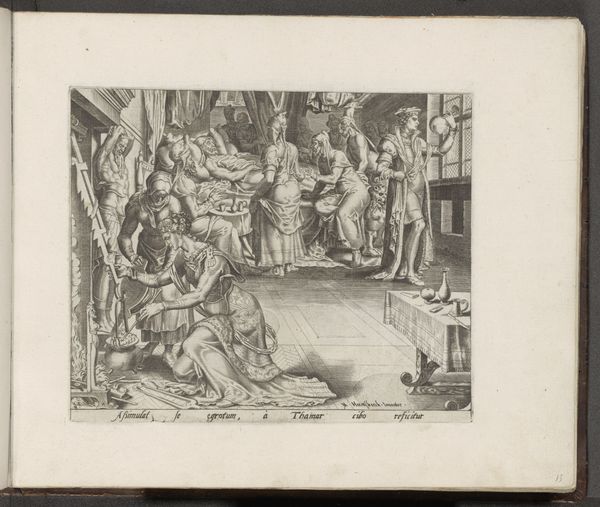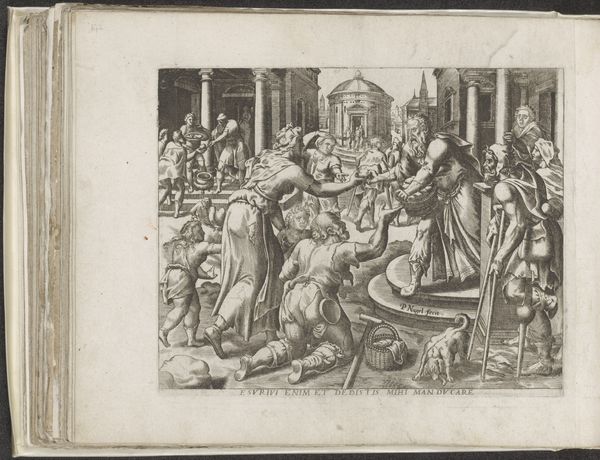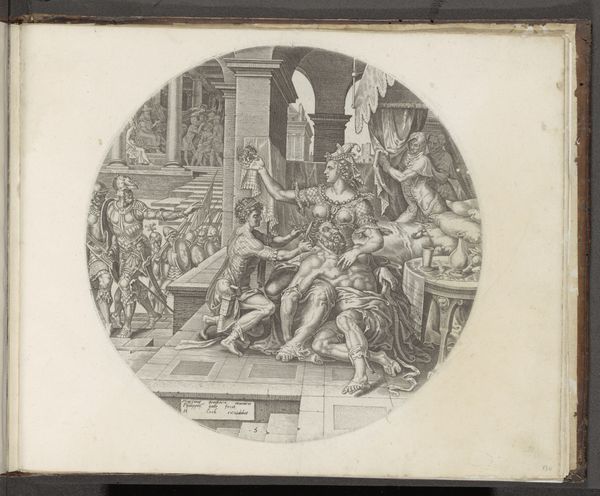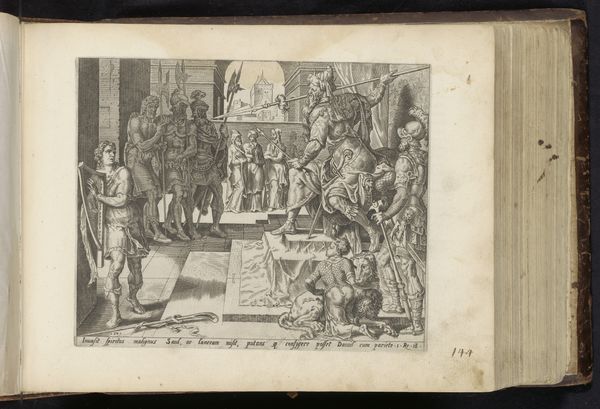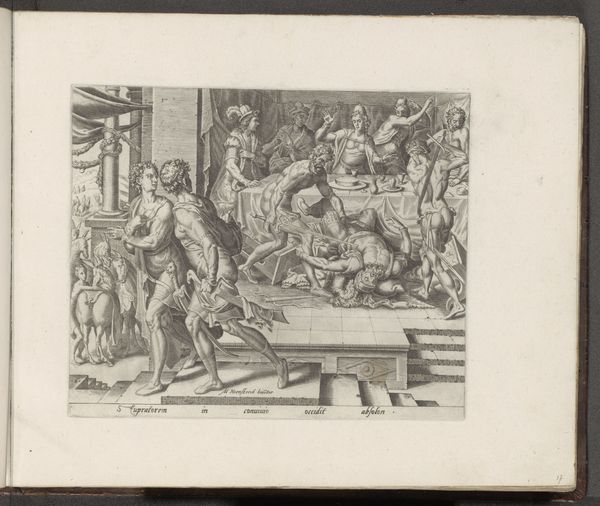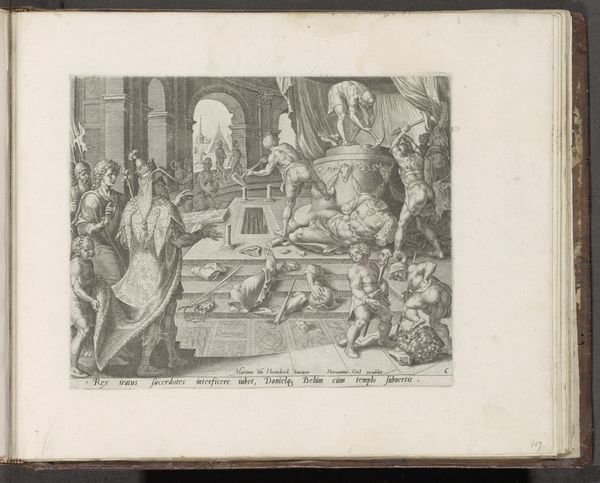
print, intaglio, engraving
#
aged paper
#
toned paper
#
quirky sketch
#
narrative-art
# print
#
intaglio
#
sketch book
#
figuration
#
11_renaissance
#
personal sketchbook
#
sketchwork
#
pen-ink sketch
#
line
#
pen work
#
sketchbook drawing
#
history-painting
#
northern-renaissance
#
sketchbook art
#
engraving
Dimensions: height 214 mm, width 245 mm
Copyright: Rijks Museum: Open Domain
Editor: We’re looking at Philips Galle's "Adoration of the Magi" from around 1560. It's an engraving, so a print on paper. It has an intricate but almost chaotic feel, like a bustling stage scene. What do you make of the overall composition, professor? Curator: The power of this piece resides primarily in its linear structure and the meticulous detail afforded by the intaglio technique. Observe the spatial arrangement. Galle employs a multi-layered approach, pushing depth through carefully etched lines, creating distinct foreground, middle ground, and background. Do you notice the interplay between the dense concentrations of lines in certain areas and the relative sparseness in others? Editor: I do. It’s almost like the lines themselves are directing my eye. They certainly create all these textures. Curator: Precisely. Furthermore, note how Galle utilizes the contrast between light and shadow—achieved solely through the density and direction of his engraved lines—to define form and generate a sense of volume. This is not merely illustrative; it's a sophisticated manipulation of the medium itself to articulate spatial relationships and create drama. It is masterful line work, quite unlike painting with form. What effect do you think the texture and shape have on its content? Editor: Hmm, it’s like the very busy texture suggests a crowded, celebratory mood, but also, maybe a bit of anxiety? And how the perspective lines lead to the holy family. Curator: An interesting assessment. Consider also how the static, almost frozen poses of the figures in the foreground contrast with the implied movement in the background. The balance he has struck suggests tension. Overall, I think that’s why it has a timeless aesthetic appeal and showcases the incredible precision attainable through engraving. Editor: This close analysis makes me appreciate the formal techniques so much more, like it’s about how he uses lines to tell a story. Curator: Indeed, the genius here lies not merely in the representation of the subject, but in Galle’s masterful exploitation of the medium’s intrinsic qualities.
Comments
No comments
Be the first to comment and join the conversation on the ultimate creative platform.
